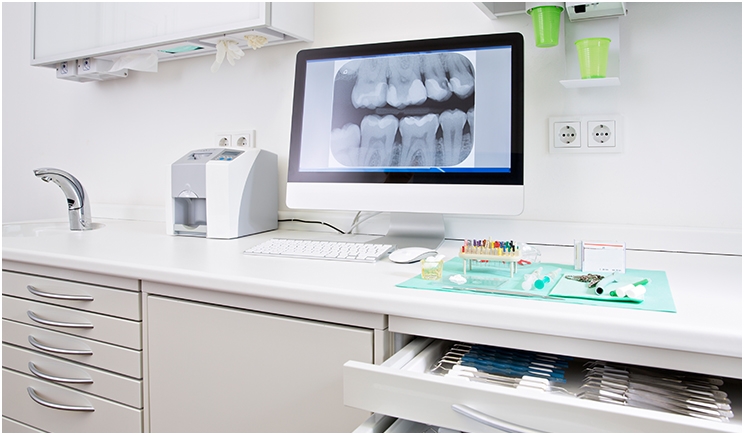
Environment-focused infection prevention protocols play an important role in the delivery of safe, high-quality dental care, both in the operatory, where surfaces are regularly contaminated during patient care, and in public areas like waiting rooms, breakrooms, and restrooms.
Potentially harmful pathogens can survive on surfaces in each of these spaces, sometimes for prolonged periods, and contribute to infection transmission, making regular cleaning and disinfection a foundational component of effective infection prevention programs.
However, it is also important to ensure that environment-focused infection prevention protocols can be implemented without damaging the surfaces and equipment on which cleaning and disinfecting products are used.
The Evolution of Healthcare Surface Disinfectants
In dental settings, disinfectant wipes that commonly incorporate alcohol and quaternary ammonium compoinds as active ingredients are commonly used in the operatory. Recent technological advances in disinfection chemistry have led to products that can quickly kill pathogens on surfaces without need for alcohol, which can damage surfaces after long-term use.
By selecting surface disinfectants that are compatible with a broad range of surfaces found within dental settings, such as plastics and stainless steel, dental practices can maximize product use and prevent surface damage. This not only makes it easier to standardize cleaning and disinfecting protocols, but also helps protect your bottom line by eliminating the need for multiple products and the risk of damage that can result in the replacement of equipment.
Striking the Balance
All disinfectants can cause compatibility issues if used improperly, but understanding potential challenges and selecting products designed to minimize them can help dental facilities protect against both pathogens and surface damage. When selecting and implementing disinfectants for your dental practice, consider these five steps to help strike the right balance between efficacy and compatibility:
- Start With Efficacy: Patient safety comes first, so it is always important to select from Environmental Protection Agency-registered healthcare surface disinfectants. For dental practices, Clorox Healthcare recommends selecting healthcare surface disinfectants with EPA-registered disinfecting claims against MRSA, influenza viruses, and bloodborne pathogens.
- Learn the Surfaces in Your Facility: What surfaces do you need to disinfect? Are they polymers like laminate, acrylic, vinyl, or polyurethane or stainless steel or another material like Corian? Most dental facilities include a wide range of materials. Knowing the surfaces in your facility is the best way to ensure they are maintained appropriately.
- Take the Time to Read the Cleaning and Care Guides: These documents are the “go to” source for important manufacturer recommendations, warning statements, and warranty information, but they can be dense. Searching for care instructions like “clean” or “disinfect,” active ingredients and product names can help you find what you need more quickly. Remember, surface disinfectants should only be used on non-critical patient care equipment. Many dental instruments require high-level disinfection or sterilization.
- Evaluate the Compatibility of the Selected Disinfectant: Look for cleaner-disinfectants that are designed to be compatible with a wide range of hard, non-porous surfaces. Check the product labels for use sites. If you’re not sure about something, reach out to the disinfectant manufacturer. It should be able to provide additional information and technical resources on compatibility. Dental equipment manufacturers can also submit their equipment for testing with Clorox Healthcare products to ensure their compatibility through the Clorox Healthcare Compatible Program, making it easier for dental practices to know what products are safe to use on which surfaces.
- Establish and Reinforce Standardized Protocols: Once you have the right products in place, establishing proper protocols and training staff to follow them become the keys to ensuring compliance. Make sure your whole team knows how and where to use products and why it matters. Taking time to review this information after initial training and providing ongoing education can help promote compliance. Reference tools like checklists are a good way to measure success and identify areas for further training.
Achieving balance between disinfectant efficacy and surface compatibility is possible, but requires a holistic view of facility maintenance and careful consideration of cleaning and disinfecting products as well as the surfaces, materials, and equipment on which they are used.
With prudent purchasing decisions and consistent, compliant use, dental facilities can better protect patients from dangerous pathogens and preserve the equipment and environmental surfaces that are a vital to delivering quality dental care.
Dr. Bell-West serves as a technical liaison for Clorox Healthcare, where she supports the development and implementation of surface disinfection solutions across the healthcare continuum. She holds a doctorate in chemistry from the University of California, Berkeley, and is an active member of the Association for the Healthcare Environment and Association for Professionals in Infection Control and Epidemiology. She has authored articles in infection control periodicals as well as developed and presented educational sessions for environmental services technicians and infection preventionists on topics including disinfectant selection and ways to improve cleaning and disinfection compliance in healthcare settings.
Related Articles
Best Practices for Stopping the Spread of Infections in Dental Settings
Every Practice Needs an Infection Control Coordinator
Procedures Exposing Dental Pulp Must Meet New Infection Control Standards











